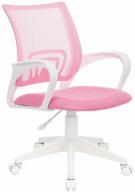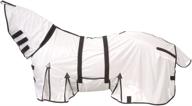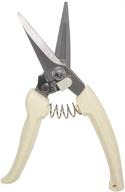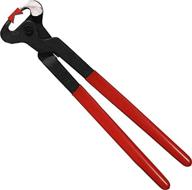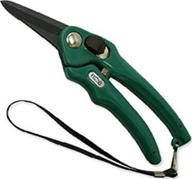How to trim your horse's hooves properly?
Trimming your horse's hooves regularly is important for their health and performance. Here are some tips for properly trimming your horse's hooves:
Gather the Right Tools
- Hoof pick - to clean out debris
- Hoof knife - to pare down excess hoof wall
- Rasp - to smooth the hoof wall
- Nippers - to trim excess length
Prepare the Hoof
- Pick out any rocks or debris with a hoof pick
- Clean the bottom of the hoof with a wire brush
- Remove any loose flakes or peeling area with a hoof knife
Trim the Hoof
- Hold the nippers parallel to the hoof wall
- Trim off small amounts of excess length at a time
- Make sure to trim the heels and the toes evenly
- Rasp any rough edges for a smooth finish
Maintain Proper Shape
The hoof should have a proper angle and balance for the horse to stand comfortably. A farrier can show you the optimal shape for that individual horse.
With the right tools and technique, you can keep your horse's hooves healthy and well-maintained between farrier visits. Always remember to work carefully and avoid overtrimming the hoof.
How to take care of your horse's hooves?
A horse's hooves require regular care and maintenance to keep them healthy. Here are some tips for taking proper care of your horse's hooves:
Daily Hoof Care
- Pick out hooves before and after riding to remove debris
- Check for thrush, cracks, and abscesses
- Apply hoof dressing or coconut oil to prevent drying
Trimming
Hooves should be trimmed every 6-8 weeks by a professional farrier. This helps maintain proper shape and angle for the hoof.
Shoeing
Shoes may be applied to protect hoof walls and provide traction. Shoes need resetting every 4-8 weeks by the farrier.
| Barefoot | Shod |
|---|---|
| Horses not in heavy work | Horses in heavy work on rough terrain |
Nutrition
A balanced diet provides nutrients needed for healthy hoof growth:
- Protein - keratin production
- Biotin - hoof horn strength
- Zinc/Copper - hoof integrity
- Omega-3s - flexibility and moisture
Quality hay and supplements support strong hooves from the inside out.
With regular care, you can help keep your horse's hooves in great shape.
Similar products
How to choose the right hoof trimming tools?
Selecting quality hoof trimming tools is important for proper hoof care. Here are some tips on choosing the right tools:
Hoof Knife
A hoof knife with a 5-6 inch blade length enables precision trimming. High carbon steel maintains a sharp edge. Choose an ergonomic handle for comfort and control.
Hoof Nippers
Forged steel nippers like Diamond brand provide clean cuts. A 10-12 inch length allows leverage needed for hard hooves. Rubber handles prevent slipping.
Rasp
A 14-16 inch coarse rasp smoothly shapes the hoof after trimming. Look for:
- Durable metal construction
- Comfortable wooden handle
- Replaceable rasp blades
Another interesting products
Hoof Pick
Choose a pick with a hook end to clean debris and a brush end to scrub soles/frogs. Durable plastic handles avoid splitting.
Additional Tools
- Wire hoof brush - cleans underside of hooves
- Hoof stand - positions hoof for trimming
- Hoof dressing - conditions hoof after trimming
Invest in a Twister hoof care toolkit for a comprehensive set of quality trimming tools conveniently packed in a carrying case.
Choosing the right hoof trimming tools helps ensure safety and proper hoof care for your horse.
How to use hoof trimmers safely?
Hoof trimmers are essential tools for proper horse hoof care. However, caution should be exercised when using nippers and knives to avoid injury. Here are some tips for safe use of hoof trimming tools:
Prepare the Horse
- Restrain the horse in a stable with crossties
- Use a hoof stand to hold the leg and position the hoof
- Calm the horse to avoid sudden movements
Protect Yourself
Wear sturdy boots in case a hoof lands on your foot. Safety glasses shield your eyes from flying debris. Use an apron to keep tools from snagging clothing.
Technique Tips
- Always cut away from yourself using nippers
- Take small, controlled cuts instead of large chunks
- Keep blades sharpened for clean efficient cuts
- Rasp gently in direction of hoof growth
Avoid prying at heels with the nippers as this can crack the hoof.
Maintain Control
Grip tools appropriately but not too tightly. Wipe sweat away regularly to prevent slippage. Stay focused and do not rush the process.
Invest in quality Diamond brand tools which provide security and stability during use. With practice and caution, you can become adept at safely trimming your horse's hooves.
Top products in 🐴 Farrier Supplies
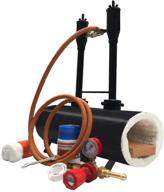

8 Review

How To Use A Horse Farrier Hoof Tool Kit?
Using a horse farrier hoof tool kit can be a bit intimidating if you're new to it, but with practice, it can become a routine part of your horse's hoof care. Here are some general steps to follow when using a horse farrier hoof tool kit:
- Prepare your horse: Before you begin, make sure your horse is calm and comfortable. You may want to tie them up or have someone hold them for you.
- Clean the hooves: Use a hoof pick to remove any dirt or debris from the hooves. This will make it easier to see what you're doing and prevent the tools from getting dull.
- Trim the hooves: Use the hoof nipper to trim the excess hoof wall, being careful not to cut too close to the sensitive parts of the hoof. Use the hoof knife to clean up any rough edges or excess sole.
- Shape the hooves: Use the rasp to shape the hooves and smooth out any rough spots. This will help prevent cracks and other hoof problems.
- Check your work: After you've finished trimming and shaping the hooves, check your work to make sure everything looks even and balanced.
- Clean and store your tools: After you're done, clean your tools with a wire brush and store them in a dry, cool place. This will help prevent rust and other damage.
- Practice makes perfect: Remember, using a horse farrier hoof tool kit takes practice. Don't be discouraged if you don't get it right the first time. With time and practice, you'll become more confident and skilled at hoof care.
What Are The Different Types Of Horse Farrier Tools And Their Uses?
Farrier tools are essential for maintaining the health of a horse's hooves. Here are some of the most common types of horse farrier tools and their uses:
- Hoof pick: Used to clean out the horse's feet before trimming.
- Hoof tester: A two-pronged tool used to locate pain or sensitive areas on the hoof sole.
- Farrier's rasp: Used to shape and smooth the hooves.
- Farrier's knife: Used to cut out excess sole and frog in the feet of the horse.
- Hoof nippers: Used to trim the excess hoof wall.
- Horseshoe pullers: Used to remove horseshoes.
- Anvil: Used to shape horseshoes.
- Farrier's nailing hammer: Used to nail the shoe to the hoof.
- Nail clincher: Used to bend the nail over to hold the shoe in place.
- Driving hammer: Used to drive nails into the hoof.
- Rounding hammer: Used to shape horseshoes.
- Crease nail puller: Used to remove nails from the hoof.
- Clinch cutter: Used to cut the bent nail.
- Clinch block: Used to hold the bent nail while cutting.
- Pull-offs: Used to remove horseshoes.
Farrier tools have evolved over time to quickly and efficiently care for a horse's feet. It is important to work with a farrier to learn how to best use these tools for your horse to ensure the health of the horse is not compromised.
What Is The Difference Between A Hoof Tester And A Hoof Nippers?
A hoof tester and a hoof nipper are two different tools used by farriers to care for a horse's hooves. Here are the differences between the two:
Hoof Tester:
Hoof Nipper:
In summary, a hoof tester is used to locate pain or sensitive areas on the horse's hoof sole or heel, while a hoof nipper is used to trim the hooves of horses.
Can A Hoof Nipper Be Used To Diagnose Foot Bone Diseases In Horses?
No, a hoof nipper cannot be used to diagnose foot bone diseases in horses. A hoof nipper is a steel tool used to trim the hooves of horses, while diagnosing foot bone diseases requires a thorough physical examination and radiographs to assess the extent of separation of the hoof wall. A hoof tester, on the other hand, can be used to locate bruised or punctured areas of the horse's foot and diagnose foot bone diseases. It is important to seek the help of a professional, especially for corrective shoeing and disease treatment and control.









